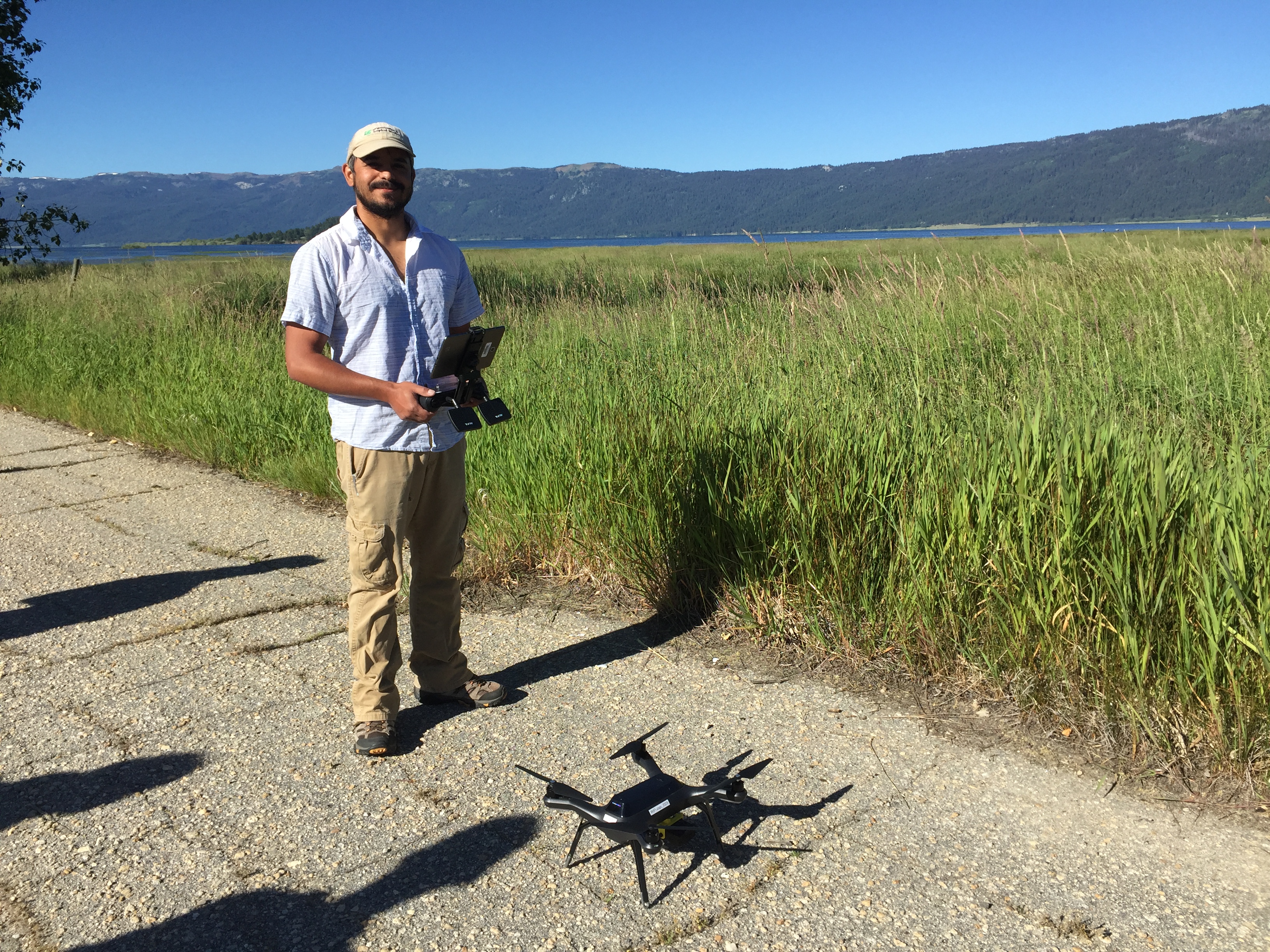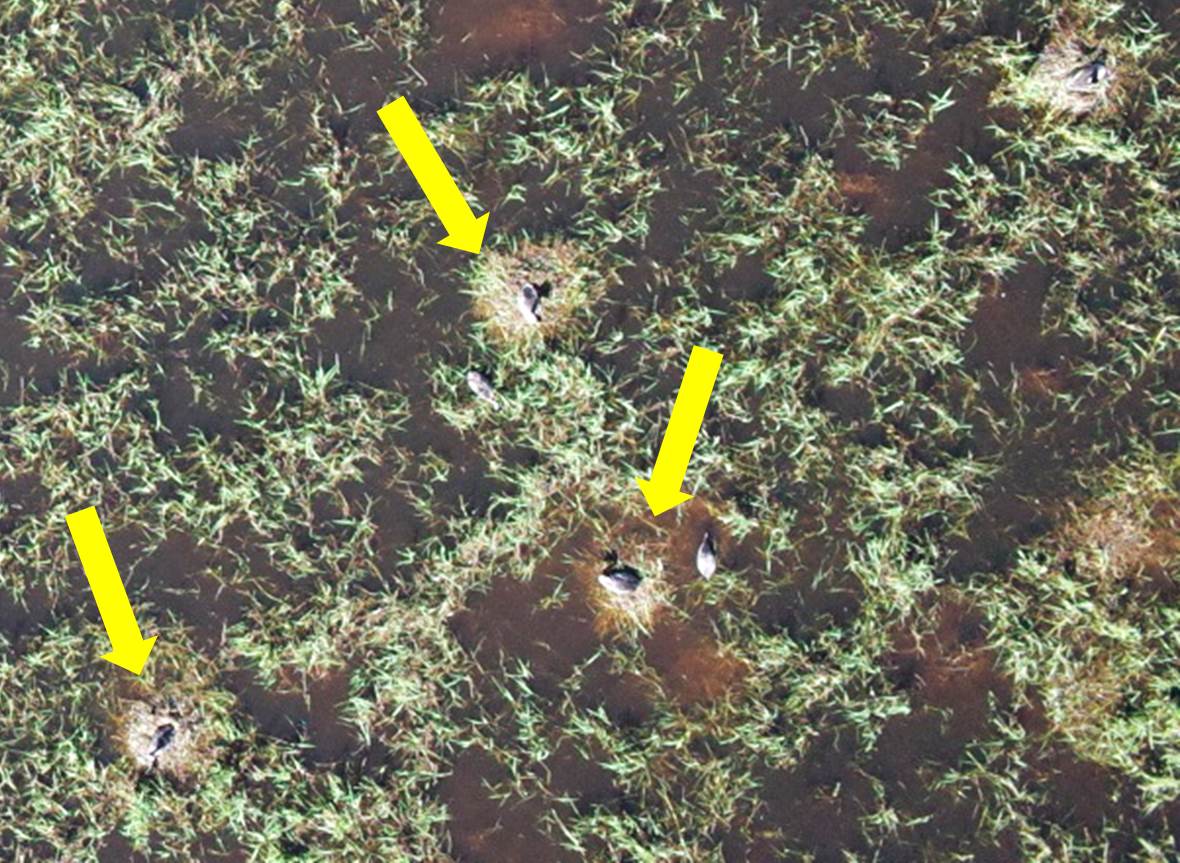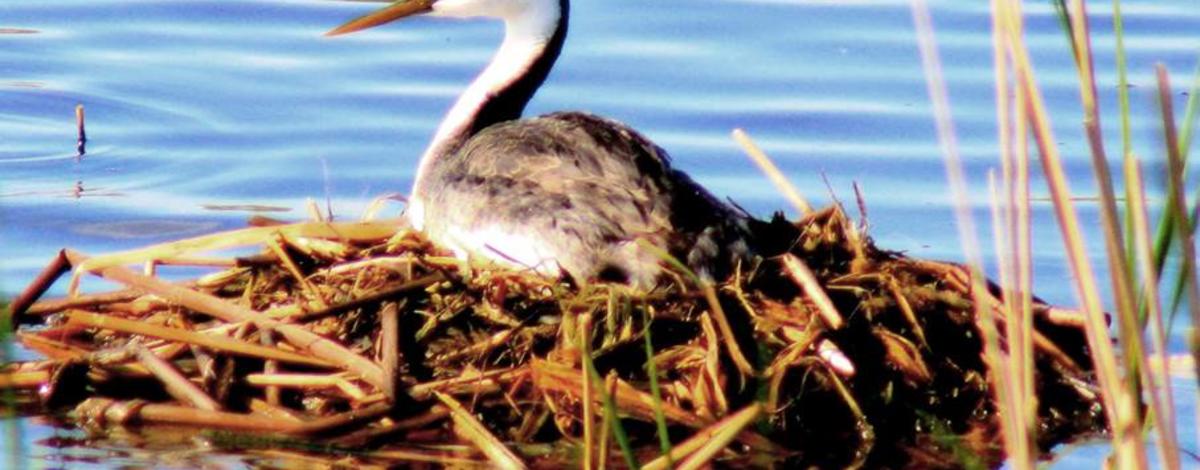Biologists are faced with a problem when it comes to nesting birds, especially birds nesting on the ground --- how do we get close enough to count active nests without disturbing birds off their eggs or leaving a scent trail for predators to follow? One solution -- Drones. A collaborative study on western grebes, led by the University of Idaho partnering with National Wildlife Refuges and IDFG, has found that a drone is very effective at getting the information we need without disturbing nesting behavior. It took a little experimentation to find the best height to fly, but with a high-resolution camera the drone could be programmed to fly about 150 ft above the colony with no apparent reaction from grebes below.

Drone flights every 2-3 days should give a clear picture of when nests were built, when eggs hatched, and when birds moved back onto the water with their chicks. This information will be used to examine nesting success and linked to changes in water levels and other factors to understand why western grebes, one of Idaho’s Species of Greatest Conservation Need, are successful some years and not others.
This drone-eye view shows grebes on nests at Lake Cascade.


